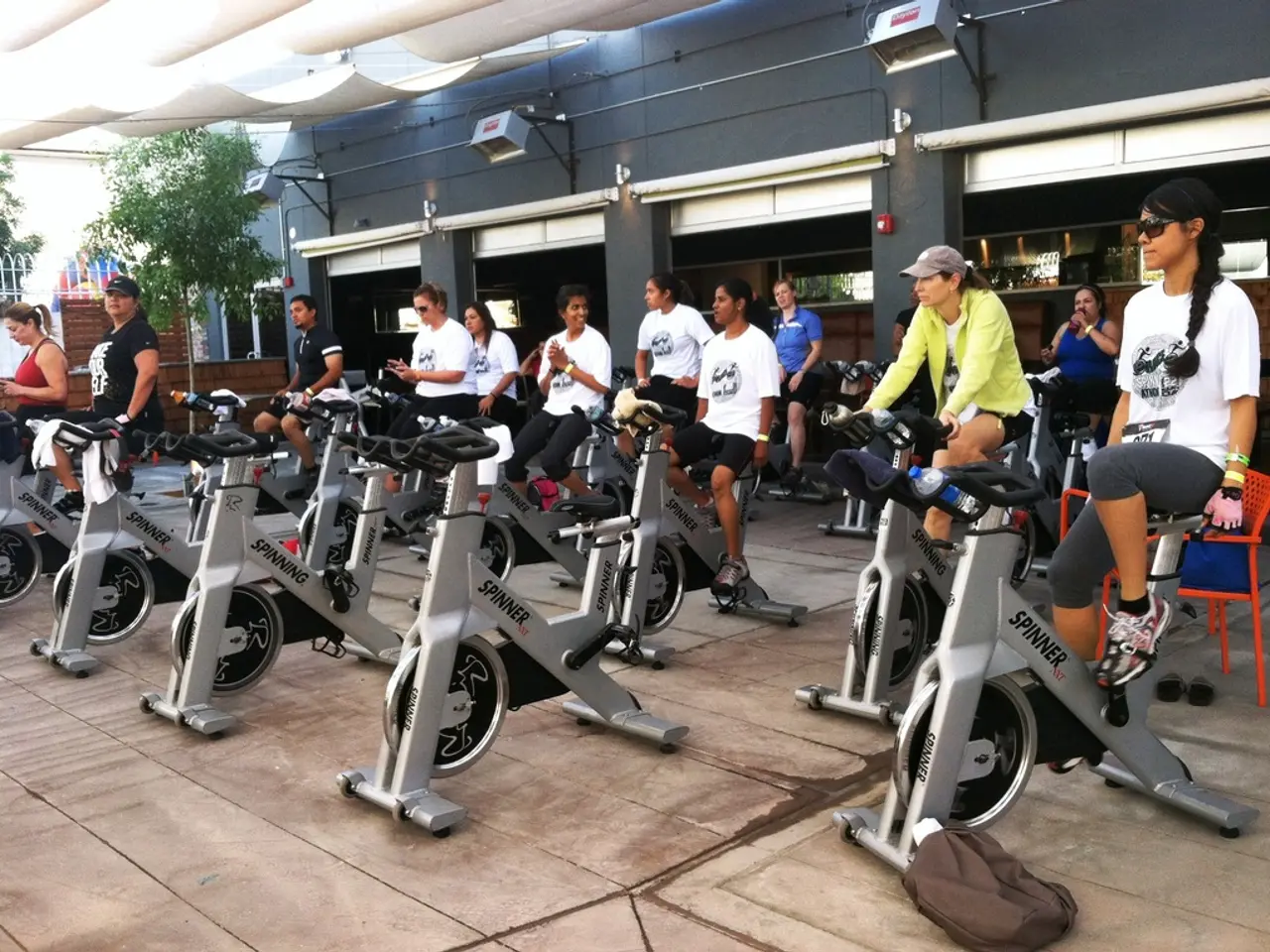Vigorous physical exercise: Advantages and Illustrative Cases
Vigorous physical activity is a high-intensity exercise that keeps the heart rate elevated and blood pumping. This type of activity is defined as any physical activity that causes labored breathing, a fast and hard heart rate, and prevents more than a few words without pausing for breath. Generally, vigorous activity requires an energy expenditure of 6 or more Metabolic Equivalents (METs), with some sources defining it as ≥ 8 METs.
The intensity of vigorous activity is often measured using METs, with activities ranking above 6 METs considered vigorous. Examples of such activities include jogging/running and lap swimming. One can also challenge their body with aerobic machines like an elliptical, stair-climber, treadmill, or stationary bike, which can be set to various intensities.
Jumping rope is another exercise that can be done anywhere and raises heart rate quickly. However, for those starting out, it may be difficult to sustain. It's recommended to begin with short time periods and work up to longer sessions.
Weight training can also be made vigorous enough to raise the heart rate by taking short breaks between sets to sustain the pace. This is particularly important as people age, as weight training becomes more important to slow muscle and bone loss.
Despite the numerous benefits of vigorous physical activity, it's essential to remember that it's not without risks. Musculoskeletal injuries are common in such activities and often relate to the type of activity, intensity, preexisting conditions, and physical anomalies. To mitigate these risks, cooling down after exercise is crucial. This can be either an active cooldown (light jogging or slow cycling) or a passive cooldown (foam rolling or stretching). While the benefits of an active cooldown are debated, it's still recommended to help the body recover.
Vigorous physical activity offers numerous health benefits. It reduces the risk of heart disease, stroke, type 2 diabetes, high blood pressure, dementia and Alzheimer's, certain cancers, improves sleep, cognition, and balance, helps maintain a healthy weight and reduces obesity rates, improves bone health, reduces symptoms of depression and anxiety, enhances quality of life, and provides an overall sense of well-being.
Before embarking on a vigorous exercise program, it's important to warm up to loosen up muscles and prepare for the workout. A training program that builds up to vigorous exercise also better allows the body to adapt and reduces the risk of cardiovascular complications.
For safety, people should wear a helmet and use bike paths when available while cycling for exercise. Additionally, various exercises and sports are modifiable for people with physical disabilities, with resources like the National Center on Health, Physical Activity and Disability providing exercise adaptation guidance.
In conclusion, vigorous physical activity is a high-intensity exercise with numerous health benefits. However, it's important to understand the risks involved and take necessary precautions to ensure safety and effective recovery.
Engaging in weight training by taking short breaks between sets can make it vigorous enough to raise the heart rate, which is particularly beneficial for people as they age to combat muscle and bone loss. Regular participation in vigorous physical activities such as jogging/running, lap swimming, and using aerobic machines like an elliptical, stair-climber, treadmill, or stationary bike, not only improves cardiovascular health but also reduces the risk of various diseases like heart disease, stroke, type 2 diabetes, and Alzheimer's.




